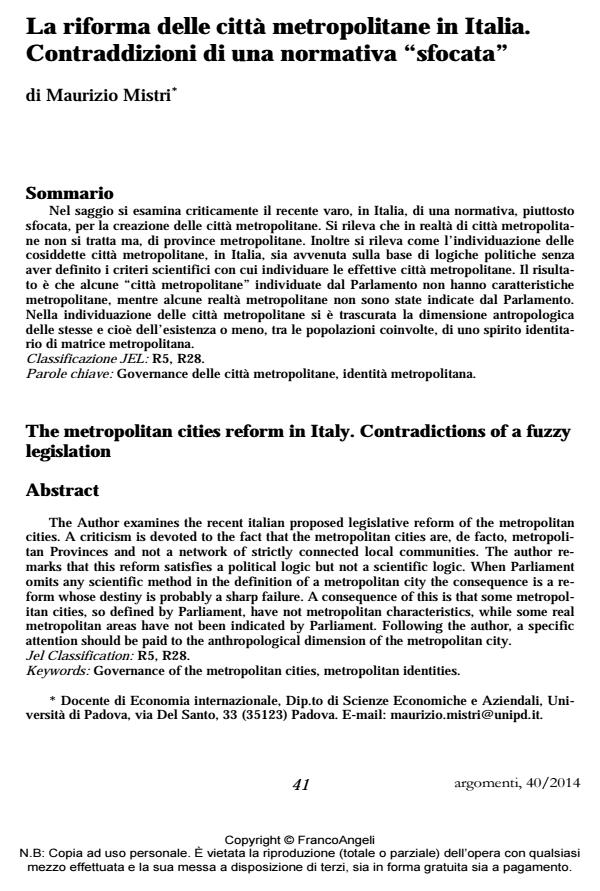The metropolitan cities reform in Italy. Contradictions of a fuzzy legislation
Journal title ARGOMENTI
Author/s Maurizio Mistri
Publishing Year 2014 Issue 2014/40
Language Italian Pages 27 P. 41-67 File size 159 KB
DOI 10.3280/ARG2014-040003
DOI is like a bar code for intellectual property: to have more infomation
click here
Below, you can see the article first page
If you want to buy this article in PDF format, you can do it, following the instructions to buy download credits

FrancoAngeli is member of Publishers International Linking Association, Inc (PILA), a not-for-profit association which run the CrossRef service enabling links to and from online scholarly content.
The Author examines the recent italian proposed legislative reform of the metropolitan cities. A criticism is devoted to the fact that the metropolitan cities are, de facto, metropolitan Provinces and not a network of strictly connected local communities. The author remarks that this reform satisfies a political logic but not a scientific logic. When Parliament omits any scientific method in the definition of a metropolitan city the consequence is a reform whose destiny is probably a sharp failure. A consequence of this is that some metropolitan cities, so defined by Parliament, have not metropolitan characteristics, while some real metropolitan areas have not been indicated by Parliament. Following the author, a specific attention should be paid to the anthropological dimension of the metropolitan city.
Keywords: Governance of the metropolitan cities, metropolitan identities
Jel codes: R5, R28.
- Illegal Buildings and Local Finance in New Metropolitan Perspectives Fabiana Forte, in Advanced Engineering Forum /2014 pp.600
DOI: 10.4028/www.scientific.net/AEF.11.600
Maurizio Mistri, La riforma delle città metropolitane in Italia. Contraddizioni di una normativa "sfocata" in "ARGOMENTI" 40/2014, pp 41-67, DOI: 10.3280/ARG2014-040003